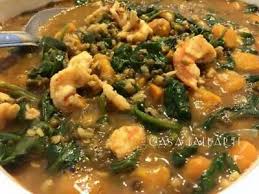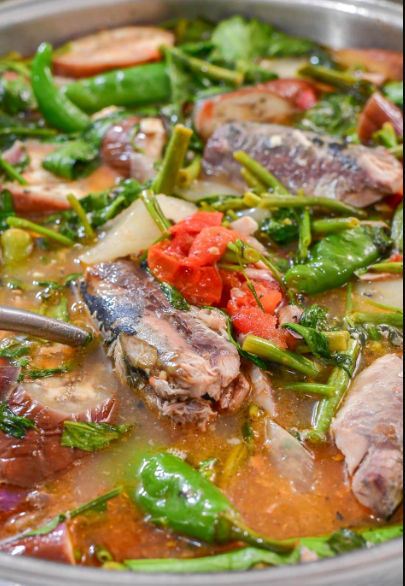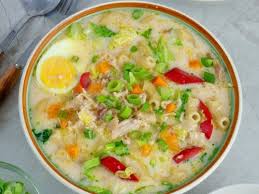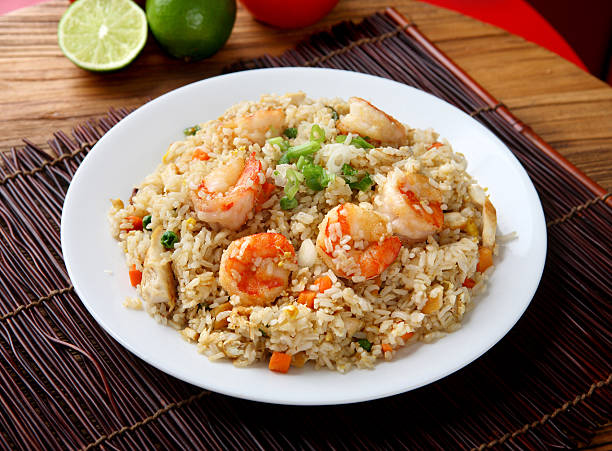Easiest Ginisang Monggo with Kalabasa Recipe. There’s something timeless about a bowl of Ginisang Monggo. Earthy, hearty, and warm—it’s a dish that feels like home. But when you add tender squash, vibrant greens, and rich flavors from the sautéed aromatics, it becomes even more special. This version of Ginisang Monggo with Kalabasa is perfect for family meals, cozy dinners, or even for meal-prepping ahead of a busy week.
I grew up eating monggo almost every Friday. It’s affordable, filling, and packed with nutrition. What I love about this version is how the sweet notes from calabaza squash blend beautifully with the creamy mung beans. Toss in fresh greens like spinach or malunggay, and you’ve got a one-pot dish that’s not only comforting but also nourishing.
Let’s walk through how you can make this at home with simple, wholesome ingredients.

What is Ginisang Monggo with Kalabasa?
Ginisang Monggo is a traditional Filipino stew made from mung beans that are simmered until soft and creamy. “Ginisang” means sautéed, so this dish starts with a flavorful base of garlic, onions, and tomatoes.
In this version, we’re adding kalabasa (squash) for sweetness and richness, plus a generous handful of greens like spinach or malunggay for a healthy boost. It’s typically enjoyed with rice and sometimes paired with crispy toppings or savory sides.
Ingredients You’ll Need
Here’s what goes into this cozy dish:
- Mung Beans (Monggo) – These small green legumes are full of fiber and protein. They soften into a thick stew after simmering.
- Kalabasa (Calabaza Squash) – Adds a natural sweetness and creamy texture to the dish.
- Spinach or Malunggay Leaves – Leafy greens that balance the richness with freshness.
- Tomatoes, Onion, and Garlic – The classic trifecta that forms the aromatic base.
- Salted Small Fish (Dilis or Anchovy Substitute) – Optional but adds depth and umami.
- Soy Sauce or Liquid Seasoning – For flavor-enhancing saltiness.
- Ground Black Pepper – For mild heat and flavor.
- Neutral Cooking Oil – Such as canola or sunflower oil, for sautéing.
- Water – For boiling the mung beans and creating the stew.
✅ Optional topping: Crispy tofu cubes or roasted chickpeas can give a satisfying crunch without using animal-based toppings.

How to Cook Ginisang Monggo with Kalabasa
Step 1: Soak the Mung Beans
Start by soaking the mung beans in water for several hours or overnight. This softens them and cuts down the cooking time.
Step 2: Sauté the Aromatics
In a deep pot, heat some cooking oil over medium heat. Add the garlic and sauté until golden. Toss in the chopped onion and tomatoes and cook until soft and aromatic.
Step 3: Add the Mung Beans
Drain the soaked mung beans and add them to the pot. Stir well to coat the beans in the sautéed aromatics.
Step 4: Pour in Water and Simmer
Add water and a splash of soy sauce or your preferred liquid seasoning. Bring to a boil, then reduce heat and simmer until the mung beans are soft and starting to thicken. This may take 35 to 45 minutes depending on how long they were soaked.
Step 5: Add the Kalabasa
Once the mung beans are tender, add the diced squash. Let it simmer until the squash is cooked through but not mushy—about 10 to 12 minutes.
Step 6: Add the Greens
Add your leafy greens and let them wilt for a minute or two. Taste the broth and adjust seasoning with more soy sauce or black pepper if needed.
Step 7: Serve and Enjoy
Serve hot with steamed rice. If you like a bit of texture, add crispy tofu cubes or roasted seeds as a topping.
Cooking Tips
- Soaking is key – It speeds up cooking and gives the beans a creamy consistency.
- Add water gradually – If the broth thickens too much while cooking, you can always loosen it up with more hot water.
- Keep squash firm – Add kalabasa only after the beans are soft to avoid overcooking it.
- Leafy greens go last – This keeps them vibrant and fresh.

Ginisang Monggo with Kalabasa
Ingredients
Method
- Start by soaking the mung beans in water for several hours or overnight. This softens them and cuts down the cooking time.
- In a deep pot, heat some cooking oil over medium heat. Add the garlic and sauté until golden. Toss in the chopped onion and tomatoes and cook until soft and aromatic.
- Drain the soaked mung beans and add them to the pot. Stir well to coat the beans in the sautéed aromatics.
- Add water and a splash of soy sauce or your preferred liquid seasoning. Bring to a boil, then reduce heat and simmer until the mung beans are soft and starting to thicken. This may take 35 to 45 minutes depending on how long they were soaked.
- Once the mung beans are tender, add the diced squash. Let it simmer until the squash is cooked through but not mushy—about 10 to 12 minutes.
- Add your leafy greens and let them wilt for a minute or two. Taste the broth and adjust seasoning with more soy sauce or black pepper if needed.
- Serve hot with steamed rice. If you like a bit of texture, add crispy tofu cubes or roasted seeds as a topping.
Variations You Can Try
- With Coconut Milk – Stir in a splash of coconut milk before serving for a richer, creamier stew.
- With Tofu or Tempeh – Pan-fried tofu or tempeh can be added for extra protein and texture.
- With Tinapa Flakes – Smoked fish adds depth, if you’re looking for a more savory profile.
- Without Fish – You can skip the dried fish altogether and still get a rich taste using soy sauce and sautéed aromatics.

What to Serve With Ginisang Monggo
- Steamed Rice – The classic partner. The thick stew soaks perfectly into the rice.
- Fried Eggplant – Adds a soft texture and a slightly smoky flavor.
- Grilled Chicken Thighs – A great protein-rich side that complements the munggo.
- Sautéed Kangkong – Quick, simple greens to balance out your meal.
Why You’ll Love This Recipe
This dish is more than just a comfort food—it’s packed with fiber, vitamins, and flavor. It’s affordable, easy to make in large batches, and reheats beautifully. Plus, it’s incredibly versatile. You can tweak it based on what’s in your fridge and still end up with something delicious.
Whether you’re cooking for the whole family or just want a warm, satisfying bowl of goodness for yourself, Ginisang Monggo with Kalabasa is one of those go-to recipes that never gets old.
Can I cook this without any seafood?
Yes, you can skip the dried fish and use soy sauce or seasoning blends for flavor
How long does this last in the fridge?
It can be stored in an airtight container in the fridge for up to 3 days. Add a bit of water when reheating, as it thickens over time.
Can I freeze it?
Yes! Munggo freezes well. Store in portioned containers for easy thawing and reheating.
What if I don’t have kalabasa?
You can substitute it with butternut squash, kabocha, or even sweet potato.
Final Thoughts
There’s a reason why Ginisang Monggo has stood the test of time—it’s simple, nourishing, and endlessly comforting. By adding squash and greens, you elevate a humble dish into something hearty and wholesome. Whether served as a weekday staple or a warm dish for chilly evenings, this version of Ginisang Monggo with Kalabasa is sure to earn a place in your regular meal rotation.
Give it a try, share it with loved ones, and don’t forget to take a photo of your creation. Happy cooking!
Craving for MORE
TRY THESE TOO


